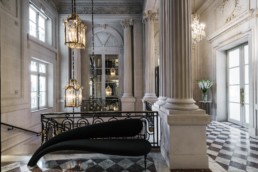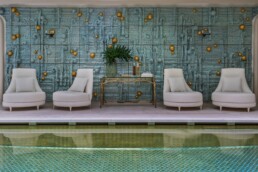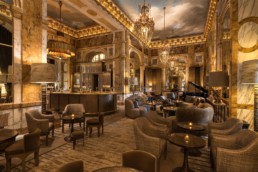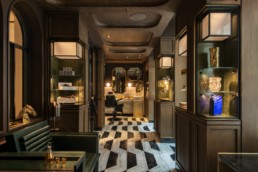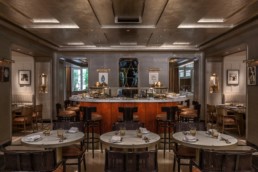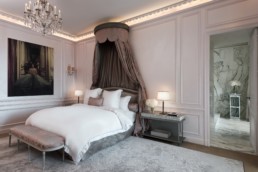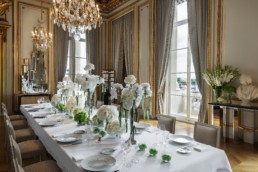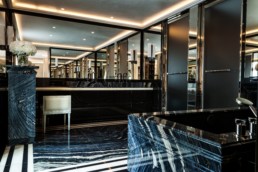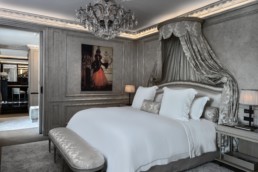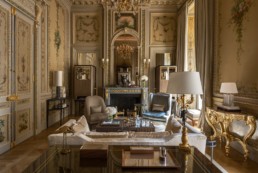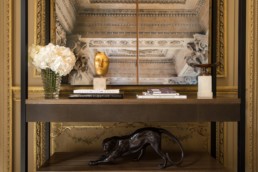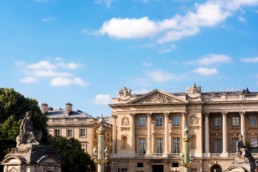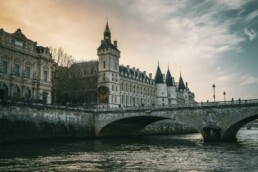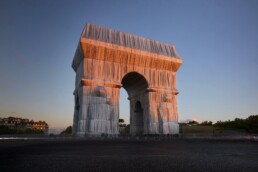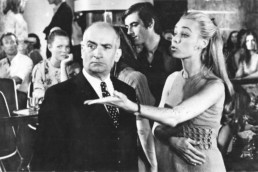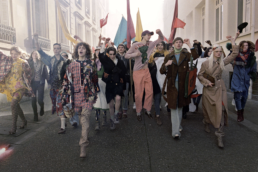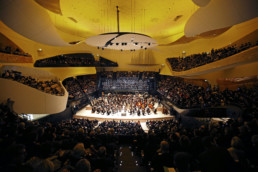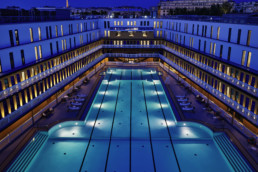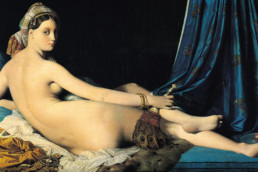At the corner of Place de la Concorde, where the cobblestones of Paris seem to echo the footsteps of centuries past, stands the Hôtel de Crillon, a palace of timeless elegance. This hotel, with its neoclassical façade, embodies a rich and complex history, interwoven with grandeur, intrigue, and moments of brilliance.
The story of the Hôtel de Crillon begins in 1758, when architect Ange-Jacques Gabriel was tasked with constructing two twin palaces to adorn the entrance of Rue Royale. One of these buildings would later become the Hôtel de Crillon, named in honor of the Count of Crillon, a hero of the religious wars and a friend of King Henry IV. Initially, the palace served as a private residence for the royal family, hosting sumptuous receptions and dazzling balls.
One of the significant episodes in the history of the Hôtel de Crillon occurred in 1778 when Benjamin Franklin stayed there during his diplomatic mission to secure French support for the American War of Independence. It is said that one night, as he gazed at the city lights from his balcony, Franklin was inspired by the vision of a luminous and free Paris, strengthening his resolve to secure the French alliance.
Over the years, the palace underwent numerous transformations. During the French Revolution, it was confiscated and became the headquarters of the Ministry of Finance. The once opulent halls echoed with heated political discussions and decisions that would alter the course of history.
In 1909, the building was transformed into a luxury hotel by architects Walter-André Destailleur and Gabriel-Hippolyte Destailleur. From then on, the Hôtel de Crillon became a symbol of refinement and prestige, attracting the most prominent figures from around the world. A famous anecdote tells of an Oriental princess who stayed at the hotel with her entire entourage in 1925, bringing Persian carpets and rare incense, transforming her suite into a veritable palace from the Thousand and One Nights.
The Hôtel de Crillon was also the discreet witness to numerous historic encounters. In 1919, it was here that the Treaty of Peace with Austria was signed, ending World War I. The elegant salons became the stage for intense negotiations, where the fate of entire nations was decided.
During the German occupation of Paris in World War II, the hotel was requisitioned by Axis forces and transformed into headquarters for the officers. Despite this dark period, the hotel staff maintained discreet resistance, hiding artworks and protecting refugees. A touching story recounts how a maître d’hôtel, under the guise of serving champagne, managed to transmit coded messages to Parisian resistance fighters.
After the war, the Hôtel de Crillon regained its former splendor, continuing to welcome artists, writers, and royalty. In 1958, the hotel was the scene of a lavish party organized by one of Paris’s greatest couture houses. The gardens were illuminated by thousands of lanterns, and guests, dressed in the finest haute couture creations, danced under the stars until dawn.
Today, after meticulous renovation that preserved its historical soul while modernizing it, the Hôtel de Crillon continues to fascinate and enchant its visitors. Each room, each salon is a silent witness to the events that have shaped its history. As one walks through its corridors, one can almost hear the murmur of past conversations and smell the roses that once adorned its sumptuous gardens.
Thus, the Hôtel de Crillon, a jewel of Place de la Concorde, remains a symbol of Parisian elegance and timeless luxury. It reminds us that history is alive and that every stone, every detail of this place steeped in memory, tells a unique story of the City of Light.
Lire également :
11 November 2024
The Conciergerie of Paris
9 November 2024
Wrapped Memories: Christo’s Arc de Triomphe
28 May 2019
Geneviève Grad
29 May 2018
Gucci’s “Paris 68” Campaign
10 December 2017
The Philharmonie de Paris: Modern Harmony and Musical Heritage
21 June 2017
Molitor: Paris’ Timeless Oasis
22 May 2017
The “Collier de Chien” Bracelet by Hermès
21 January 2017




